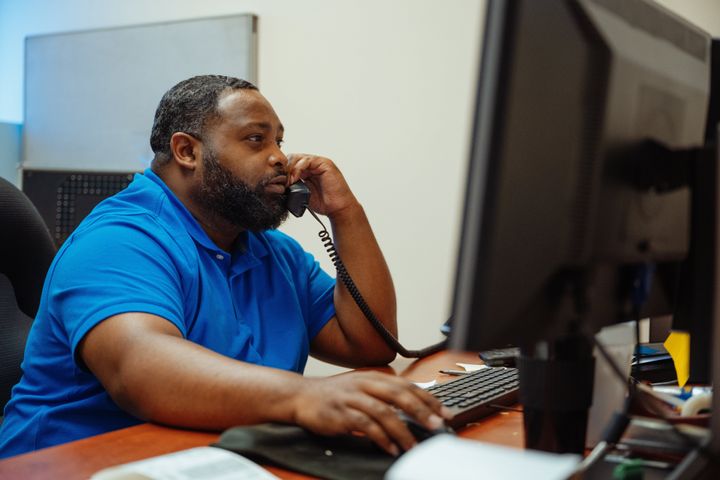News
How To Write An Email Signature That Actually Promotes A Life Outside Work
If you want to talk the talk and walk the walk when it comes to valuing work-life balance, consider rewriting your email signature at work.
For better (flexibility for doctor’s appointments) and worse (longer work hours), remote and hybrid work have blurred the lines between on- and off-the-clock time for many workers. To combat this, more and more workers are putting up email signatures that list their working hours or state that the recipient can reply whenever suits them best.
For instance, one colleague of mine includes a small, considerate note under her name and credentials in her signature: “My working hours are typically 8:30 a.m. ET to 6 p.m. ET, Monday to Friday,” it reads. “If these are not your working hours, please do not feel an urgency to respond outside of your typical working hours.”
After seeing a good wellness-promoting email signature, you might reply, “I love that signature line, could I steal it?”
That’s how Arianne Young, the founder of a virtual assistant business, Not Your Average Girl Friday, came to possess hers. It reads: “I respect boundaries around personal time, caretaking, and rest. If this email arrives while you are doing any of these things, please protect your time and wait to respond until you are back at work or at your computer.”
“No one should feel handcuffed to their inbox; nothing is truly that serious and we could all use a lot less email anxiety.”
– Arianne Young, the founder of a virtual assistant business, Not Your Average Girl Friday
Others, like freelance writer Meg St-Esprit, let people know in advance that they may be slow to respond at certain times. After a client sent a snippy email about St-Esprit’s response time, this busy mom of four added a disclaimer to her signature: “Please note I may be slower to respond to email in the months of June, July and August due to the United States’ inability to provide affordable childcare for working mothers.”
At first, St-Esprit wondered if the line might be a bit much, but then people started replying to it and saying they loved it. When she tweeted about her signature, the tweet went viral.
“I did get some feedback on my original version, and edited it this summer,” said St-Esprit, who writes primarily about parenting.
“I changed ‘mothers’ to parents, because while the child care crisis primarily impacts mothers, it does impact families as a whole,” she said. “I also changed ‘inability’ to ‘refusal’ because I feel at this point they know what they need to do — but no one in power is doing it yet.”
Has it helped St-Esprit maintain boundaries in her work life?
“Well, people still send snippy emails or poke me less than 24 hours later for non-urgent matters. I can’t change them,” she said. “But I’m working on changing my ‘always available’ mindset at the moment.”
While this trend is still in its nascent phase ― it’s more common in creative fields than others, the experts I spoke to said ― Keni Dominguez, the CEO and Founder of Bay Equity HR, thinks these signatures could be a game-changer for maintaining workers’ sanity and keeping a healthy balance between work and personal time.
Putting your hours in your email signature “sets clear expectations right off the bat. It tells people when they can expect to hear back, which is super helpful for planning out their own tasks,” she said. “You know when to reach someone, and they get to manage their day better, staying focused instead of constantly checking their inbox.”
When everyone’s clear on that, communication flows much better, she said.
Jennifer Borda, a professor of communication at University of New Hampshire whose research at work-life balance and working mothers, isn’t surprised by the rise of wellness-promoting signature lines.
While the U.S. workforce is trending older than in the past and there are more workers over 65 than ever, Borda thinks millennial and older Gen Z workers are making their mark on workplace culture, starting with defining clear expectations about work-life balance.
“Plus, I think the shift to remote work, hybrid work and more flexible arrangements in 2020 and 2021 created an opportunity for workers to think about what kinds of working conditions make sense with their own lives,” Borda said.
Realizing just how much the “work” part of the “work-life” equation could bend, some people begin to construct firmer boundaries between their work and personal lives, Borda said.
Of course, adding a sentence or two about your working hours or when someone can expect a response is a lot easier to do if you’re a freelancer, a small business owner or otherwise self-employed.
For example, time management coach Anna Dearmon Kornick said she recently came across a signature line from a female small business owner that probably wouldn’t work in a more formal setting.
The business owner listed her working hours, along with a joke about her upcoming out-of-office dates: “Upcoming OOO,” it read. “Does my luteal phase count?”
To Kornick, it was a perfect example of a business owner who knows her target clients ― other female business owners who’d laugh at a bit of period humor.
“She doesn’t shy away from sharing that during the luteal phase of her menstrual cycle, she typically takes time off,” Kornick said, “But of course, a line like that probably wouldn’t fly in the corporate environment.” (In a lot of corporate offices, uniform, consistent email signatures are expected or at least encouraged by HR.)
Want to adopt a more wellness-minded signature to your work emails that will fly? Below, our experts offer some advice on how to draft yours.
Get a read on your corporate culture first.
In general, Kornick said, you want to get a temperature check of your workplace and its marketing and branding policies before adding anything that is outside the norm. Does the “mission, vision, and values” part of your company’s handbook repeatedly emphasize how important work-life balance is to your workplace? Your wellness line will probably be just fine.
Kate Zipay, an assistant professor of management at Mitch Daniels School of Business at Purdue University, thinks the best way to determine if your signature aligns with your company culture is to observe and talk with others.
“You might even collaborate with a few trusted colleagues to draft and refine your signatures together,” she said.
Dominguez, the HR expert, thinks it’s generally safe to list your standard working hours and perhaps your preferred times for phone calls or urgent contacts.

Include the things that are important to you.
You don’t want this signature addition to be overly long. To that end, aim for a short, unfussy one-liner that emphasizes what’s most important to you. That might mean you indicate your work hours, Young said, or when the recipient can expect a reply.
State what you want others to know, not what you want them to do.
It’s important that your wellness line clearly states what you want others to know, rather than what you want them to do: “The key is to communicate your boundaries in a way that’s informative and not a directive,” Zipay told HuffPost.
For instance, inform people them of when you’re online by simply writing, “My work hours are from 8 a.m. to 4 p.m.”
“It’s a statement that sets clear expectations about when you’re available without implying that others should adjust their behavior or expectations around you,” Zipay said.
Support Free Journalism
Already contributed? Log in to hide these messages.
Don’t feel guilty for including a wellness line.
Setting these boundaries not only helps you manage your day better, but also sets a positive example for colleagues about valuing personal time, Dominguez said.
“It’s all about making work life a bit easier for everyone involved,” she said.
You may be among the first to include a wellness line in your signature, but given the direction office work culture is taking in these post-pandemic years, you probably won’t be the last.
“This feels like a healthy shift that more and more people are opting to do,” Young said. “It’s a shame that we’re currently in a time when adding messages like this are even necessary. No one should feel handcuffed to their inbox; nothing is truly that serious and we could all use a lot less email anxiety.”
Support Free Journalism
Already contributed? Log in to hide these messages.

